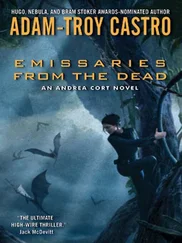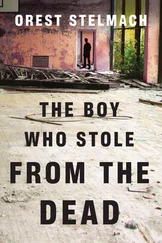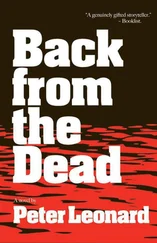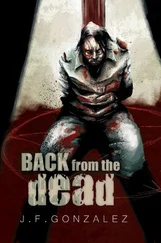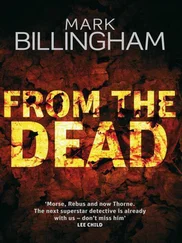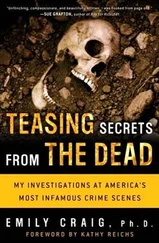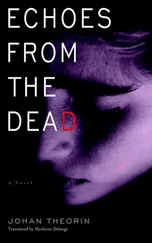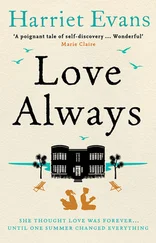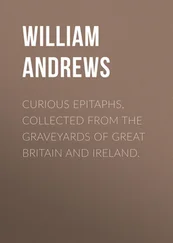After I left the facility that night, I went home and quickly poured a therapeutic dose of bourbon over a few ice cubes. As I sat on my back porch, drinking slowly and trying to regain some composure, I seriously doubted if I was cut out for this kind of work.
I managed to sleep for a few hours, but my dreams were filled with crawling maggots and voracious ants. At dawn, back at the facility, two startled vultures who had been trying to disembowel a nearby body flew to the trees directly over my head. As they took off slowly and clumsily from their breakfast, they followed their usual practice of spewing vomit on rapid takeoff-vomit that fell at my feet and over my corpse's torso. Meanwhile, slimy trails of the snails who had visited the carcass during the predawn hours now crisscrossed my subject's face, and his cheeks spewed adolescent maggots who seemed to be growing bigger right before my eyes. Maggots were pouring from his nostrils, too, and they had almost finished snacking on the last traces of his eyeballs, leaving empty sockets in his skull. Stifling a sigh, I forced myself to step over this man's body and set up my tripod.

Entomologists analyze maggots, adult flies, other insects, and similar small scavengers to estimate when and where a person died, and to help determine the types of injuries a victim has suffered. Adult flies-the very same houseflies that buzz around your picnic dinner-can sense death immediately. They are drawn to a body within a few minutes of when death occurs and, if they have access to the carcass, they land and start surveying the territory. Appearances to the contrary, when they crawl around on the body, they aren't eating much-just looking for the ideal place to lay their eggs. The tiny eggs, which resemble little clumps of sawdust, hatch into maggots within a day or two. The maggots immediately start to devour the carcass, growing visibly bigger with each passing day.
At first they don't even resemble the fat, stubby little legless larvae with soft white skin that most people visualize when they hear the word. Maggots have to go through three developmental stages, or “instars.” Their pale, white, papery skin splits and they shed it each time, until finally these mobile, voracious little eating machines have passed from infancy through their teenage days to reach their full growth potential.
Then, when they just can't eat any more, they crawl away from the dead body to find a place to hide. Their soft white skin becomes a dark-brown pupa casing, or shell, shaped something like a miniature football about one-fourth to one-half inch long, within which they metamorphose into adult flies-much as a caterpillar changes into a butterfly within a cocoon. If the weather stays warm and humid, the adult fly breaks open the end of its shell after a week or two, and the cycle is complete. At that point, if by any chance there's anything left of the body, the cycle begins again-and then again. If the entomologist can calculate the cycle, he or she can help you estimate when the dead body was first exposed to the elements.
Time of death is just one of the factors an entomologist helps to determine. Since the insects and other arthropods (spiders, mites, centipedes) commonly found on bodies have preferred habitats, sometimes an entomologist can tell if a person was moved after he or she was killed. If a corpse found in Florida is colonized by a species found only in New Jersey and parts north, the authorities are likely to include the possibility that the body was brought in from someplace else.
Sometimes maggots can even help you figure out whether a person sustained any injuries at the time of death. When the adult flies lay their eggs, they seek out the sites that provide the best environment for their young. In the human body, that would be the mouth, nose, ears, eyes, and genitals-warm, moist, and dark. The flies burrow as far as they can into those tempting, secret places and lay their eggs. In a decaying corpse, therefore, you would expect to see early maggot concentrations there-and if they've congregated anywhere else, perhaps another body part was broken or bloody at the time of death.
What still amazes me is how quickly maggots can reduce a fleshy corpse to bone. That childhood rhyme of “The worms crawl in, the worms crawl out” is not far wrong. There's a saying among forensic entomologists: Three flies and their offspring can consume a carcass as quickly as can a full-grown lion. Not bad for tiny creatures less than an inch long.
By the time I finished my time-lapse portrayal of decay, I was no longer fazed by sights-and smells-that two weeks ago had left me nauseated and trembling. Somehow, the shocking had become commonplace, and the human remains I saw rotting in the sun had begun to look more like three-dimensional puzzles and less like once-living beings. As I would later learn, this kind of detachment had its price-but it was also the necessary precondition for doing this work. If I was ever to learn to estimate the postmortem interval-how long it had been since someone had died-or to read the story of a person's last hours in a few broken bones, I would have to look at human remains as though I were a disembodied representative of science, not as a woman whose own body would one day end up rotting in the ground like everybody else's.
I still don't like maggots, though. Never have. Never will.

“I have a new challenge for you, class,” said Dr. Bass. On his desk he placed a metal cafeteria-style tray filled with a collection of human bones.
“I must confess,” he went on, “I don't have high hopes. In twenty years, no one has ever gotten this one right.”
I'd just finished a semester of Bill Bass's osteology class, where he'd done his best to initiate me and a dozen other grad students into the science of bone. Now we were taking the next giant step into the mysteries of forensic anthropology.
Forensic anthropologists take what we as physical anthropologists have learned about bone and apply it to criminal investigations. In the ideal world, physical anthropologists can look at a skeleton and tell you several basic pieces of information: age, race, sex, and stature. They can probably also tell you something about bone diseases and trauma-broken bones, healed injuries, and other evidence of how the person may have lived or died.
Of course, most anthropologists are usually working with centuries-old skeletons. We forensic anthropologists do the same kind of work-but on people who may have died only a few years, months, or even days ago. Our work may also involve fresh but unassociated body parts-the kind normally encountered in high-impact plane crashes or explosions-as well as corpses partially destroyed by fire.
As part of our academic training, my classmates and I were required to study cultural anthropology and theory of archaeology, and I'd struggled mightily through those classes. But I got my reward when it was finally time to learn about bone. No two ways about it, bone fascinated me.
True, Dr. Bass was an incredibly demanding professor, which I must admit I resented at first, particularly since, at Dr. Hughston's clinic, I'd been considered something of a bone expert myself. I soon came to find out, though, that it wasn't the same at all. The bones at the clinic might be broken or even crushed-but they were always safely encased within a recognizable portion of the human anatomy, always connected to their neighboring bones just as nature intended. As a forensic anthropologist, I would not always have the luxury of whole bones. A murderer might deliberately shatter his victims' bones, or a dog, bear, or coyote might crunch the bones between its teeth. And fire could reduce a human skeleton to mere fragments with devastating efficiency.
Читать дальше



